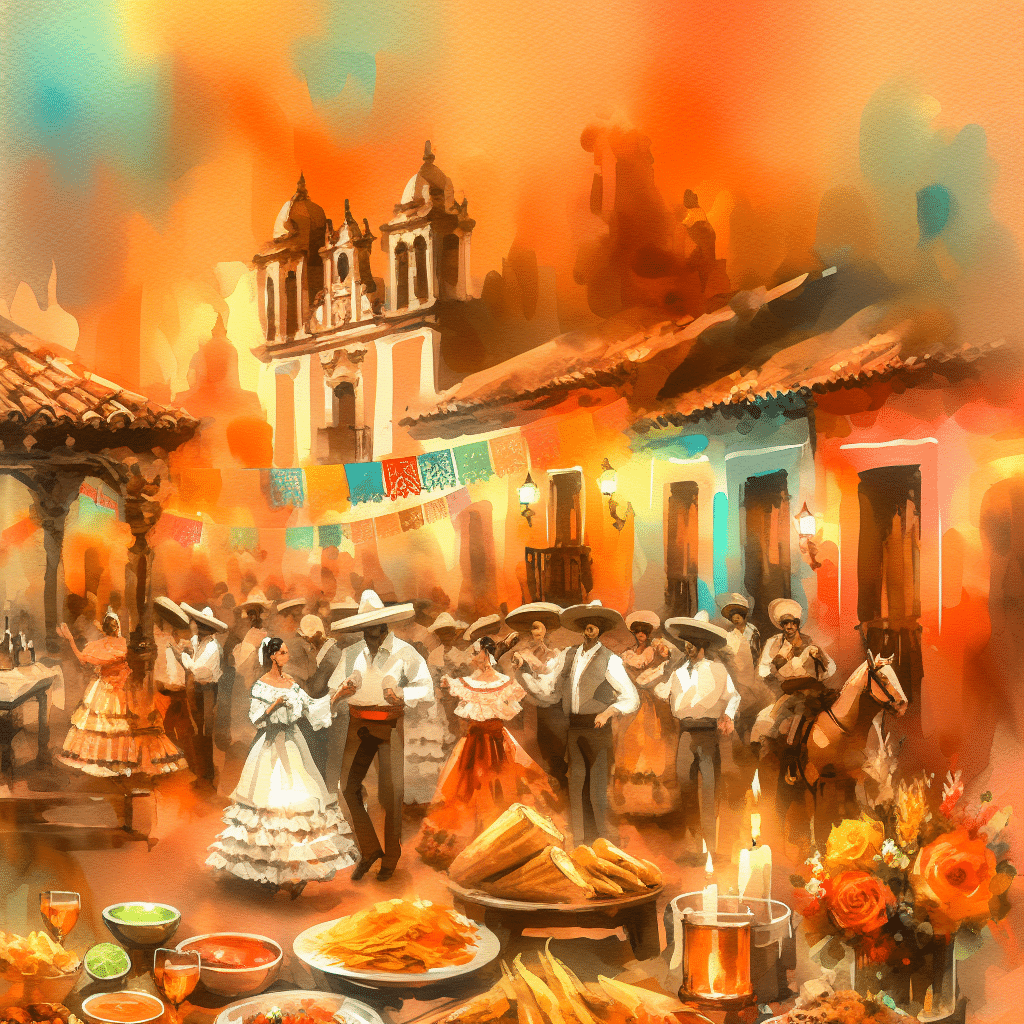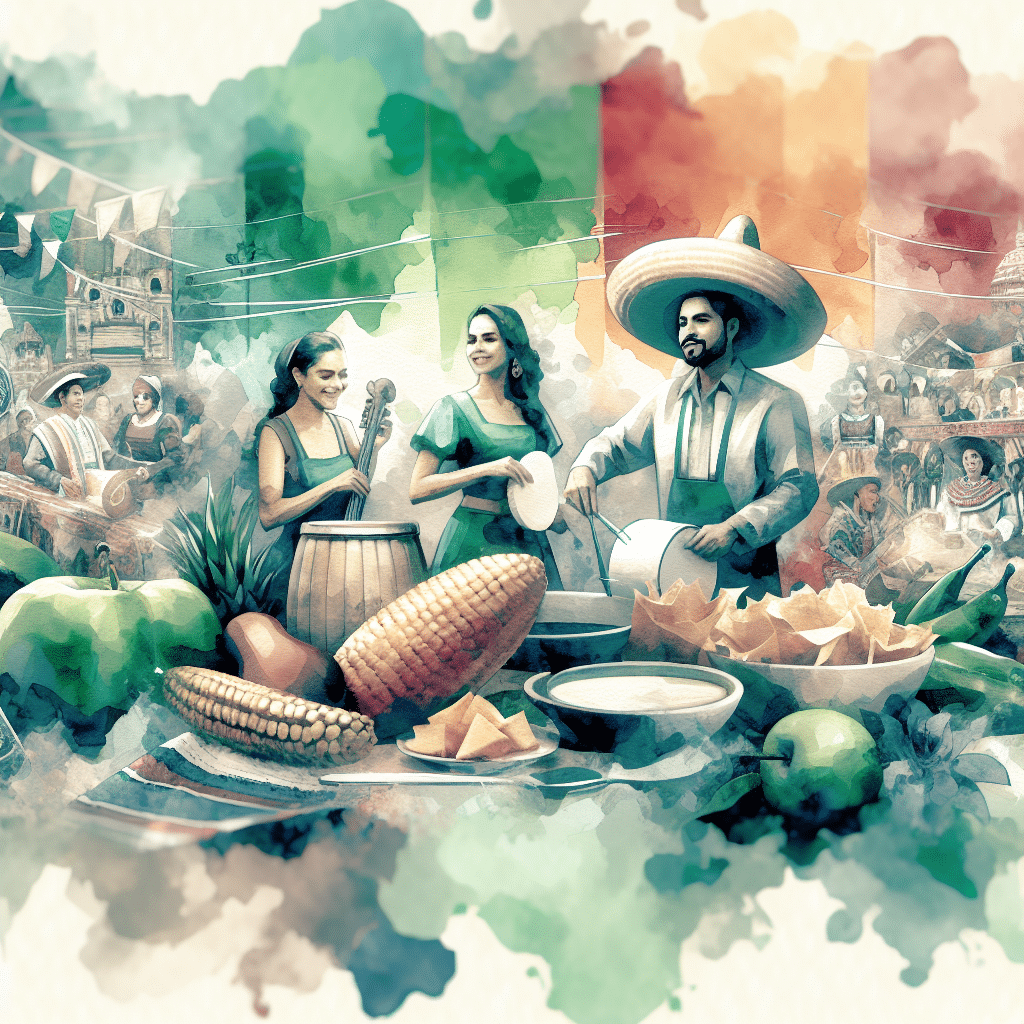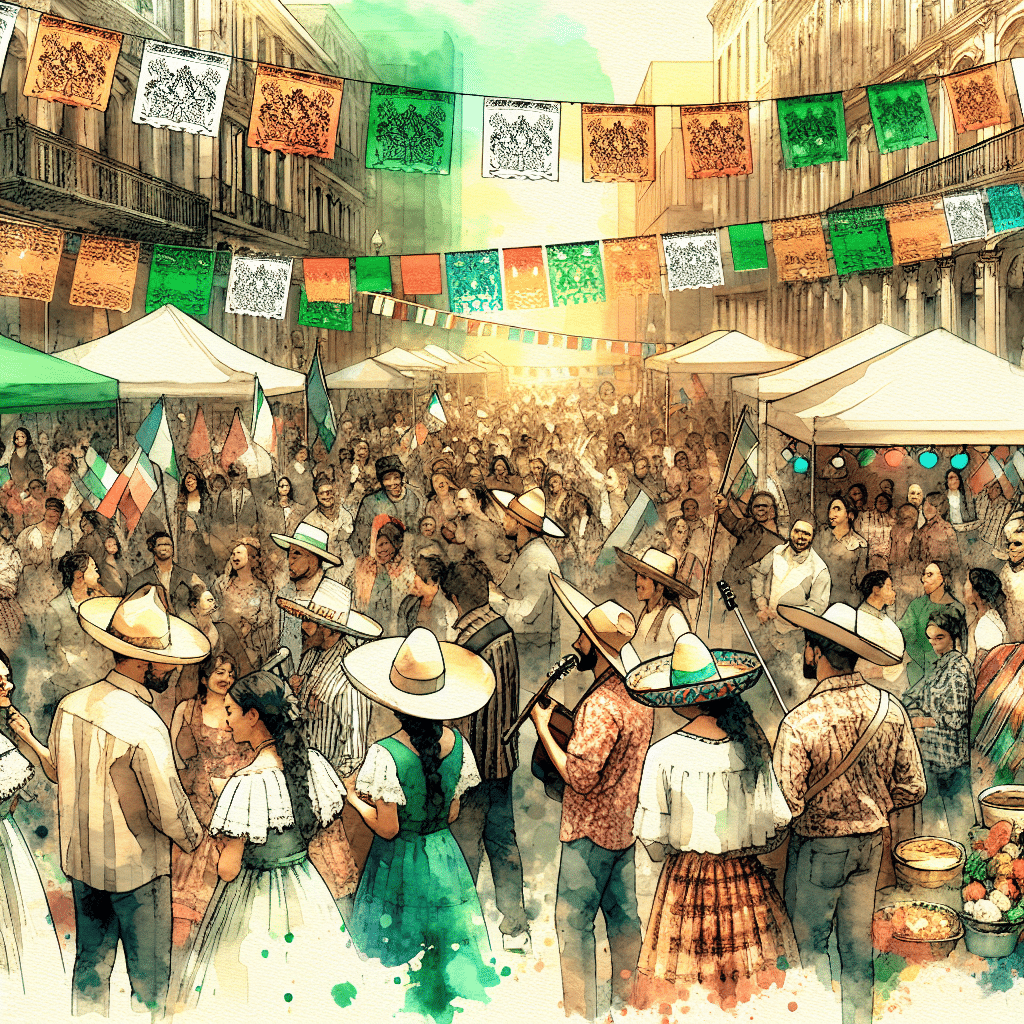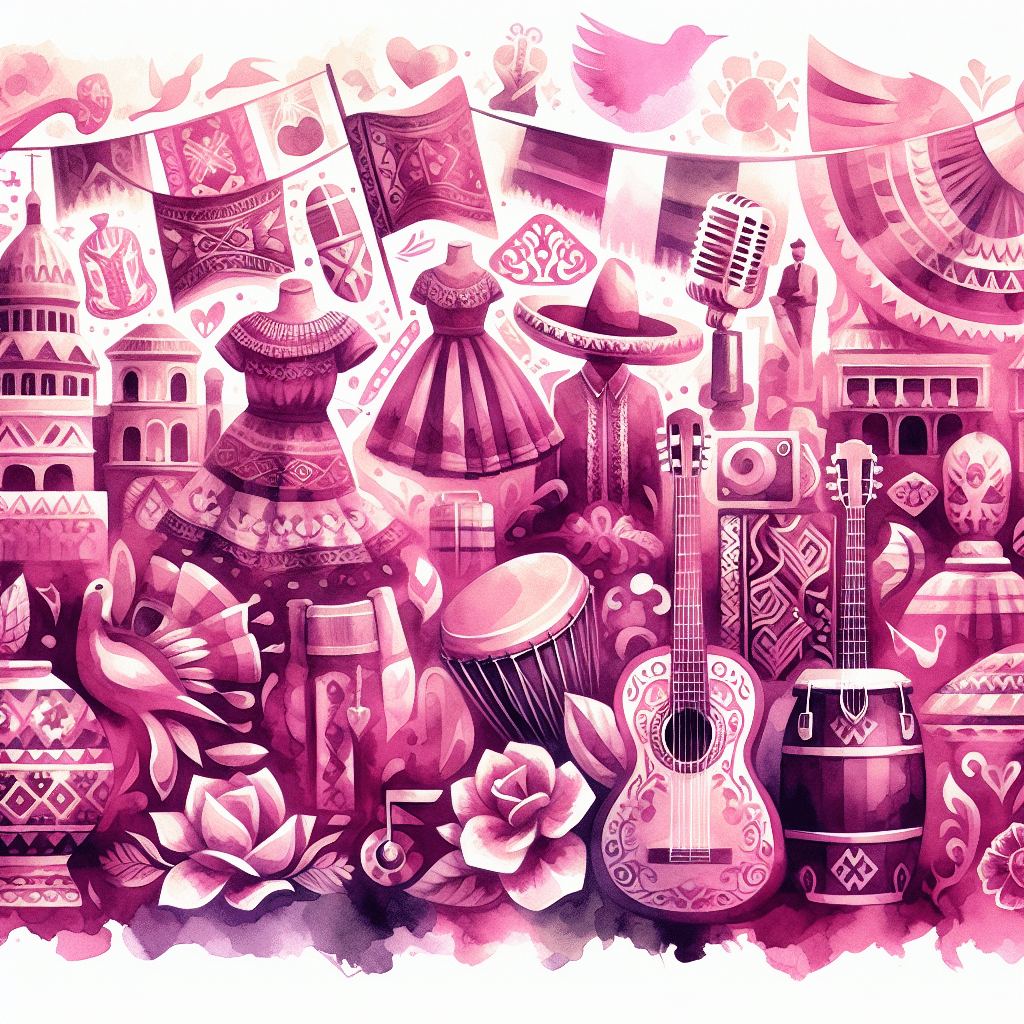
Celebrating Hispanic Heritage Month: Traditions, Culture, and Festivals
Celebrating Hispanic Heritage
Let’s jump into the colorful world of Hispanic culture and traditions, celebrating the essence of Latino heritage and the spirited festivities that come with it.
Why Hispanic Heritage Month Matters
Hispanic Heritage Month, from September 15th to October 15th, is all about recognizing and celebrating the histories, cultures, and contributions of American citizens with roots in Spain, Mexico, the Caribbean, and Central and South America (UCANR). This month-long party kicks off on September 15th, marking the independence anniversaries of Costa Rica, El Salvador, Guatemala, Honduras, and Nicaragua. Mexico and Chile join the celebration on September 16th and 18th, respectively.
So, why the big celebration? Hispanic Heritage Month honors the rich and diverse cultural tapestry woven by Latino communities. From music and dance to food and art, this month showcases the vibrant contributions of Hispanic and Latino Americans to the cultural melting pot that is the United States. For more on the festivities and events, check out hispanic heritage month activities.
Embracing Latino Culture
Latino culture is a fiesta for the senses. It’s a blend of music, art, food, and traditions that span across nations. During Hispanic Heritage Month, you can dive into this cultural extravaganza through various events, exhibitions, concerts, performances, lectures, and, of course, food-related affairs (Dixie Chik Cooks).
You might find yourself swaying to the rhythm of salsa or merengue at a local festival, or savoring the flavors of iconic Latino foods like tacos, empanadas, or arroz con pollo. The celebration isn’t just about the past; it’s also a nod to the contemporary influences that Latino culture continues to have on American society. Whether it’s through the lens of latino film festivals or the beats of reggaeton, Latino culture is ever-present and evolving.
To truly appreciate the depth of Hispanic culture, let’s look at its core elements:
Music and Dance
Hispanic culture is synonymous with lively music and passionate dance. The beats of bachata, the moves of flamenco, and the energy of cumbia are just a few examples of how dance brings together friends and family in joyous celebration (DFNTLY Entertainment). For more on the cultural significance of dance, check out our section on traditional latino dances.
Food
Latino culinary traditions are as diverse as they are delicious. From the spicy kick of Mexican cuisine to the savory delights of Caribbean dishes, food plays a crucial role in the cultural celebrations. Whether it’s a family gathering or a festive event, food is at the heart of Hispanic traditions. For a deeper dive into iconic Latino foods, visit latino heritage month.
Art and Fashion
The influence of Latin American art is undeniable. From the murals of Diego Rivera to the vibrant works of Frida Kahlo, Latino artists have made significant contributions to the global art scene. This artistic flair extends into fashion, where traditional garments like the guayabera or the flamenco dress have made their mark. Explore more about the evolution of Latin American art and its cultural significance.
In essence, Hispanic Heritage Month is a time to celebrate the rich and diverse heritage of Latino communities, honoring their past while looking forward to a vibrant future. So, get ready to fiesta like there’s no tomorrow!
Traditional Hispanic Festivals
Hispanic culture is bursting with lively festivals that unite communities in celebration of their rich heritage. Let’s check out three standout festivals: Día de los Reyes Magos, Juan Pablo Duarte Day, and the Cesar Chavez Holiday.
Día de los Reyes Magos
Forget Santa; in many Latin American countries, the real holiday magic happens on January 6th with Día de los Reyes Magos, or Epiphany. This day marks the visit of the Three Kings to baby Jesus, bearing gifts of gold, frankincense, and myrrh. But let’s be real, kids are more excited about the toys!
Every year, children leave their shoes out, hoping the magi will fill them with presents. The day is packed with parades, reenactments, and, of course, delicious food. Rosca de Reyes, a sweet bread shaped like a wreath, is a must-have. For more festive ideas, check out our guide on Hispanic Heritage Month activities.
| Country | Celebration Date | Main Activities |
|---|---|---|
| Mexico | January 6 | Parades, Rosca de Reyes, gift-giving |
| Spain | January 6 | Parades, gifts, family feasts |
| Puerto Rico | January 6 | Parades, music, gifts |
Read more about the traditions here.
Juan Pablo Duarte Day
Heroic deeds deserve epic celebrations. The Dominican Republic honors Juan Pablo Duarte Day on January 26th. Duarte, the founding father of the Dominican Republic, led the fight for independence from Haiti. The day is filled with patriotic displays, parades, and events celebrating his legacy.
Schools and public institutions hold ceremonies, and it’s a national holiday. Flags wave high, and the national anthem fills the air. Want to join the fun? Check out one of the many Latino cultural events happening across the country.
| Country | Celebration Date | Main Activities |
|---|---|---|
| Dominican Republic | January 26 | Parades, ceremonies, patriotic displays |
Read more about the traditions here.
Cesar Chavez Holiday
March 31st is the Cesar Chavez Holiday, celebrated in California, Arizona, and Texas. This day honors Cesar Chavez, the Mexican-American labor leader and civil rights activist who co-founded the United Farm Workers. Chavez’s dedication to non-violent protest and workers’ rights has left a lasting impact on American history.
The holiday includes marches, educational programs, and community service activities. It’s a day to reflect on social justice and the ongoing fight for workers’ rights. For more on Chavez’s legacy, visit our section on famous Hispanic Americans.
| State | Celebration Date | Main Activities |
|---|---|---|
| California | March 31 | Marches, educational events, community service |
| Arizona | March 31 | Parades, educational programs, speeches |
| Texas | March 31 | Community gatherings, educational activities |
Read more about the traditions here.
These festivals offer a peek into the vibrant Hispanic culture and traditions. Each celebration provides a unique glimpse into the values, history, and community spirit that define Latino heritage.
Cultural Celebrations
Exploring the lively and colorful celebrations in Hispanic culture is like opening a treasure chest of history, art, and joy. Let’s check out some of the standout festivities that capture the heart and soul of Latino heritage.
Cinco de Mayo Festivities
Cinco de Mayo, celebrated on May 5th, marks the Mexican victory over the French at the Battle of Puebla in 1862. While it’s a regional holiday in Mexico, it’s a big deal in U.S. cities with large Mexican communities. Imagine mariachi bands, vibrant parades, and enough tacos to make your abuela proud.
In Puebla, they reenact the historic battle, while in the U.S., it’s all about margaritas, traditional dances, and street festivals. Want to join the fun? Check out our guide to Latino cultural events.
National Hispanic Heritage Month
From September 15th to October 15th, National Hispanic Heritage Month celebrates the histories, cultures, and contributions of Americans with roots in Spain, Mexico, the Caribbean, and Central and South America. This month is packed with activities, from educational events to cultural performances.
Schools, museums, and community groups across the U.S. host events that highlight Hispanic heritage. For activity ideas, our list of Hispanic Heritage Month activities is your go-to. Whether it’s a salsa dance workshop or a lecture on famous Hispanic Americans, there’s something for everyone.
Latin American Art Influence
Latin American art is a fascinating mix of European, indigenous American, and African traditions, blending together since the Spanish and Portuguese arrived in the Americas. This artistic fusion has created a unique and vibrant art scene that continues to evolve and inspire.
From the muralists of Mexico to the avant-garde movements in Brazil, Latin American artists have mixed foreign styles with local traditions. By the late 20th century, Latin American art started gaining international recognition, with artists celebrated globally. Mexico City, for example, has become a powerhouse in the art world, with critics, museums, and galleries.
Here’s a snapshot of Latin American art’s influence:
| Aspect | Description |
|---|---|
| Fusion of Styles | Combines European, indigenous, and African influences |
| Historical Impact | Reflects major historical and political events |
| Global Recognition | Gained international acclaim in the late 20th century |
To explore more about the blend of culture and creativity, visit our section on Latino Heritage Month.
Embracing Hispanic culture through these celebrations offers a glimpse into the rich heritage that shapes the Latino community. Whether you’re dancing to mariachi tunes or marveling at an art exhibit, there’s always a reason to celebrate.
Latino Culinary Traditions
When you think about celebrating Hispanic culture and traditions, the food is as lively and flavorful as the people. Let’s dig into some of the most mouth-watering Latino culinary traditions.
Tex-Mex Cuisine Influence
Tex-Mex cuisine is the tasty offspring of traditional Mexican recipes and American tastes. It’s like a culinary soap opera: dramatic, spicy, and endlessly entertaining. Popular since the 1800s, Tex-Mex-style restaurants have been a staple in American culture, thanks to entrepreneurs, chefs, and restaurant owners like Adelaida Cuellar (Smithsonian Latino Center). From sizzling fajitas to cheesy enchiladas, Tex-Mex has something for everyone.
| Tex-Mex Favorites | Description |
|---|---|
| Fajitas | Grilled meat served with tortillas and fixings |
| Enchiladas | Tortillas rolled around a filling and covered with sauce |
| Quesadillas | Tortillas filled with cheese and other ingredients, then grilled |
| Margaritas | Tequila-based cocktail with lime juice |
Iconic Latino Foods
Latino cuisine has gifted the world with iconic foods that are now part of American culinary culture. Take the Cuban sandwich, for example. It’s not just a sandwich; it’s a masterpiece. Then there are arepas, the versatile cornmeal cakes that can be stuffed with anything your heart desires (Smithsonian Latino Center).
Here are some other iconic Latino foods that will make your taste buds dance:
- Empanadas: Originating in Spain and Portugal, these savory pastries are filled with everything from chorizo to beef. American versions might use lighter fillings like chicken or pork (Dixie Chik Cooks).
- Tamales: These bundles of joy are made from masa dough filled with meat and vegetables, wrapped in corn husks, and steamed to perfection. They are most commonly associated with Mexico (Dixie Chik Cooks).
Food in Special Traditions
Food plays a starring role in many Latino celebrations. Whether it’s a family gathering or a national holiday, you can bet there’s a spread that will leave you stuffed and smiling.
- Día de los Reyes Magos: Celebrated with a “Rosca de Reyes,” a sweet bread that hides a tiny figurine inside. Whoever finds it gets to host the next party!
- Cinco de Mayo: This day isn’t just about margaritas; it’s also a time to indulge in traditional foods like mole poblano and tacos.
- National Hispanic Heritage Month: This month-long celebration is a great time to explore various Latino dishes and their cultural significance. Check out our article on latino traditions and customs for more.
For those looking to dive deeper into the world of Latino culinary traditions, exploring latino community celebrations can offer a wealth of delicious experiences. Whether you’re a seasoned foodie or a curious newcomer, there’s always something new to taste and enjoy.
Hispanic Dances: Where Passion Meets Tradition
When you think of Hispanic culture, dance is the heartbeat that keeps it alive. Hispanic dances are a colorful blend of passion, intricate moves, and rich cultural stories, showcasing the vibrant spirit of Latino heritage.
Feel the Rhythm
Hispanic dances are all about feeling the music and letting it move you. Whether it’s the fiery Salsa or the romantic Bachata, these dances are designed to connect you with your partner and the community. It’s not just about looking good—it’s about feeling the music and sharing that emotion.
Here’s a quick look at some popular Hispanic dance styles:
- Salsa: Born from Cuban dances like Son, cha cha cha, and Mambo.
- Bachata: From the Dominican Republic, mixing African, European, and Indigenous vibes.
- Merengue: Another Dominican gem, known for its lively, fast-paced beat.
Dance Moves That Speak
Hispanic dances are famous for their expressive and detailed movements. Salsa, for example, has quick steps and spins that need agility and precision. Bachata is all about smooth, close-body moves that scream romance and intimacy.
| Dance Style | Origin | Key Moves |
|---|---|---|
| Salsa | Cuba/Puerto Rico | Quick steps, turns, spins |
| Bachata | Dominican Republic | Smooth, close-body moves |
| Merengue | Dominican Republic | Simple, fast-paced steps |
Figures courtesy DFNTLY Entertainment
Dance: A Cultural Connector
Hispanic dances are more than just steps—they’re a gateway to Latino culture, drawing admiration and interest, especially during Hispanic Heritage Month. These dances aren’t just about moving to the beat; they bring friends and family together, creating a deep connection to the music and traditions of their ancestors.
Dance styles like Salsa and Bachata are often the stars of latino community celebrations and latino cultural events, reminding everyone of the rich history and diverse influences that shape Hispanic culture.
For more on traditional Latino dances, check out our article on traditional latino dances. And if you’re planning to join the fun, don’t miss our guide on hispanic heritage month activities.
Evolution of Latin American Art
A Melting Pot of Artistic Influences
Latin American art is like a vibrant cultural stew—mixing European, indigenous American, and African flavors into a visual feast. Artists in the region have borrowed styles from Europe and the United States, tweaking them to reflect their local cultures and experiences while keeping elements of indigenous traditions (Britannica). This blend has given Latin American art its unique flair, making it a rich and lively tradition.
Shaped by History and Politics
Latin American art has always been a bit of a rebel, evolving with the region’s cultural and political shifts. From the independence movements in the 19th century to the social upheavals of the 20th century, artists have drawn inspiration from their past, popular culture, religion, political surroundings, and personal imaginations (Britannica). This has helped create a unique identity for Latin American art, making it both a mirror and a megaphone for the region’s tumultuous history.
Stepping into the Spotlight
By the late 20th century, Latin American art had strutted its way onto the international stage. Artists from the region began to gain global recognition, and artistic hubs like Mexico City developed strong national art scenes with established critics, museums, and galleries (Britannica). This newfound fame has only added to the allure and importance of Latin American art in the global art community.
| Period | Key Developments |
|---|---|
| 19th Century | Influenced by independence movements, emergence of nationalist art |
| 20th Century | Social upheavals inspire unique artistic identity |
| Late 20th Century | Global recognition, strong national art scenes |
For more on how these influences play out in real life, check out our section on latino cultural events and discover how art intertwines with celebrations.
Latin American art is a testament to the region’s resilience, creativity, and ability to adapt. From its fusion of diverse influences to its powerful response to historical and political events, this art form continues to captivate and inspire audiences worldwide. Dive deeper into hispanic heritage month activities to see how art is celebrated and appreciated today.




